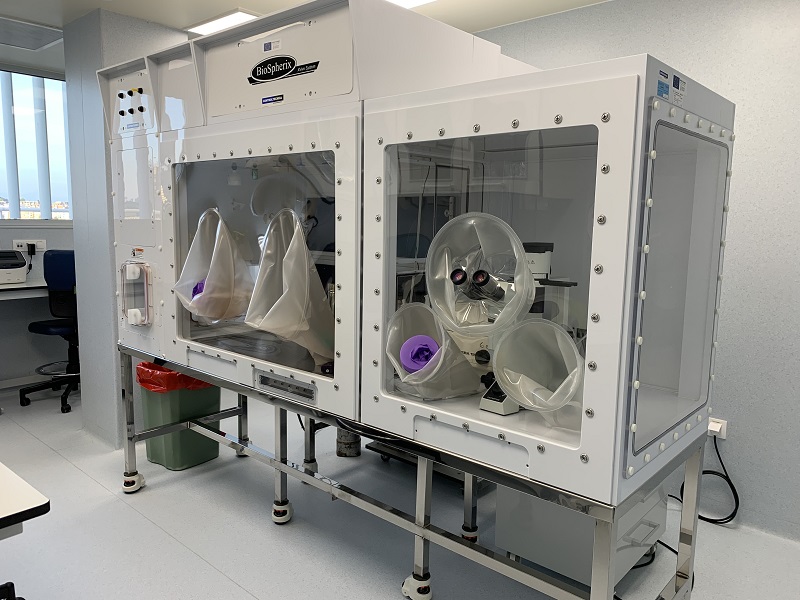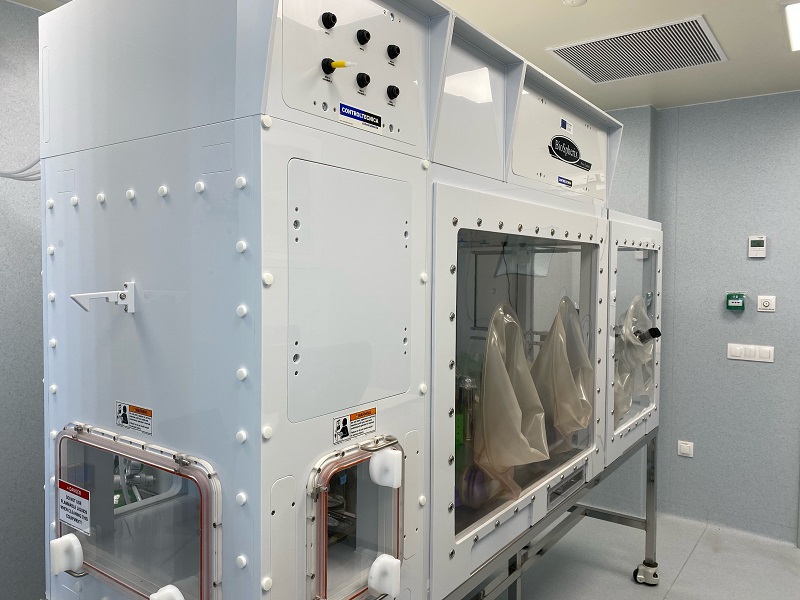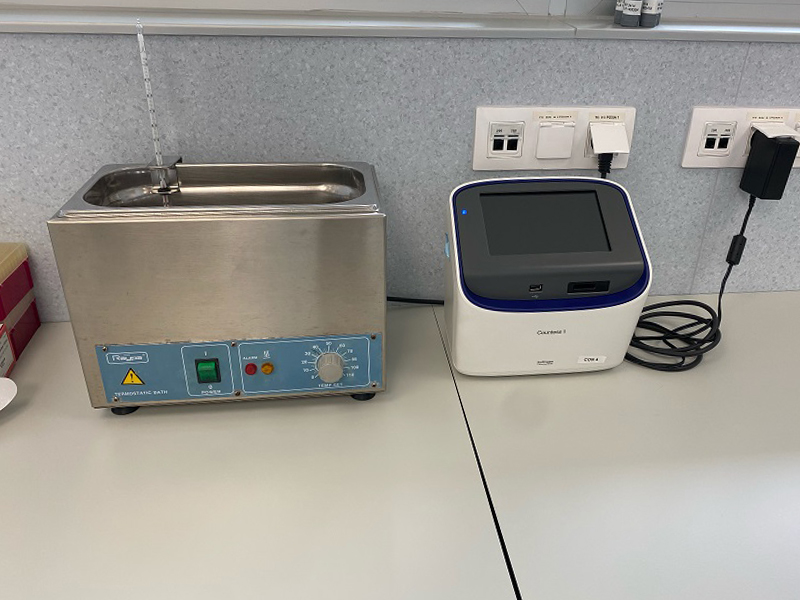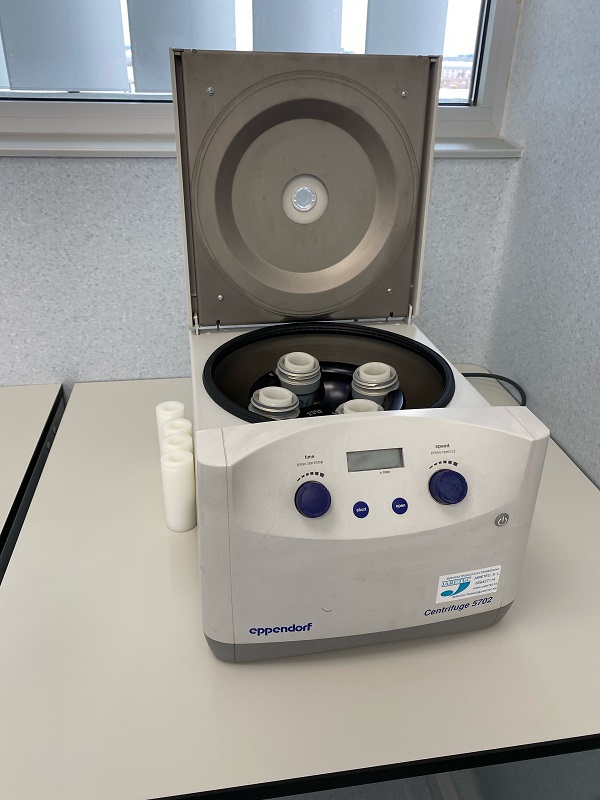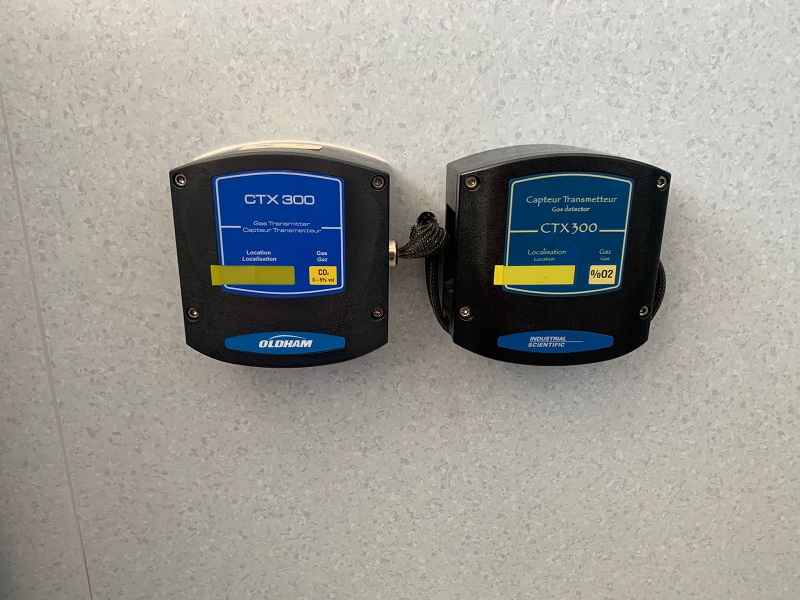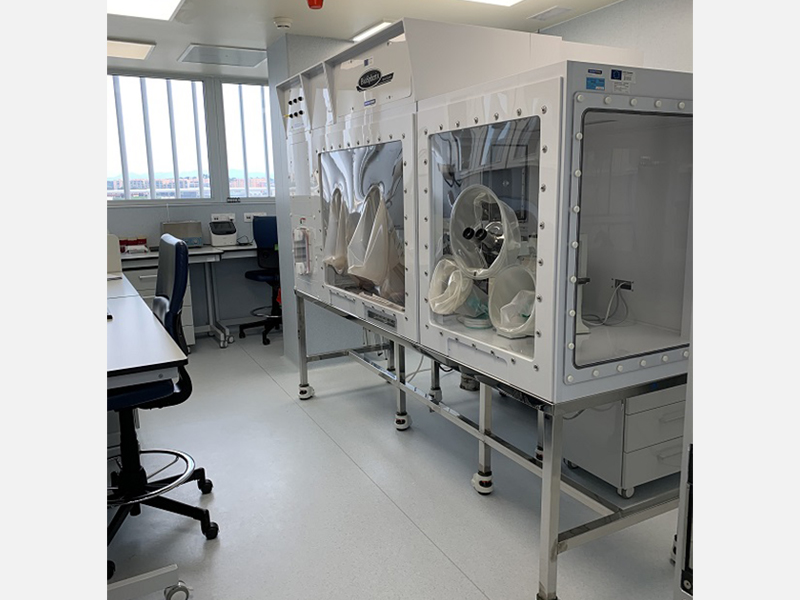
Room located inside the Cell Culture laboratory (BCL2) composed of a closed Hypoxia Station and necessary equipment for the maintenance of the cultures. The closed station allows a precise control of the percentage of hypoxia and/or hyperoxia, even at extreme values, keeping the culture conditions constant at all times, both during its handling and within the incubators. All of this ensures reproducible data.
Containment level 2 room with HEPA filtration, PVC scotch walls and own access control. Equipped with a modular and closed BIOSPHERIX X VIVO Hypoxia Station, with a working chamber where samples are handled, 4 internal incubators with independent sensors, an auxiliary chamber with equipment and a gate module with decontamination cycles for the entry and exit of material.
It allows to set a different oxygen level for each incubator and for the working chamber (between 0 and 90%), as well as a constant value of CO2 and temperature. In this way, it is possible to have 4 different O2 and CO2 conditions and adapt the working chamber to the required incubator condition. The cultures remain at all times in a controlled and constant environment by avoiding contact with the outside atmosphere that occurs when opening and closing the doors in conventional incubators.
The X VIVO software, installed on an external computer, allows the conditions of the station to be easily changed and monitored.
The hypoxia station is simultaneously connected to a nitrogen generator and an outdoor distribution plant with N2, O2 and CO2 cylinders to guarantee a continuous supply of gases.
Inside the station we have an inverted microscope, a tube centrifuge (15 and 30 mL), a vacuum pump and a complete set of micropipettes.
The room also has O2 and CO2 detectors installed to ensure user safety.
Integrated resources in the hypoxia room:
|
EQUIPMENT |
BRAND AND MODEL |
NUMBER |
INVENTORY CODE |
DESCRIPTION |
|
HYPOXIA STATION |
BIOSPHERIX X VIVO |
1 |
72-187465 |
Closed modular hypoxia station which allows working with 4 independent hypoxia/hyperoxia conditions. |
|
INVERTED MICROSCOPE |
OLIMPUS CKX31 |
1 |
Pending |
Phase-contrast inverted microscope. |
|
CENTRIFUGE |
EPPENDORF 5702 |
1 |
72-165585 |
Centrifuges specially designed for cell culture laboratories. Maximum speed of 5,500 rpm. |
|
CELL COUNTER |
COUNTESSTM II AMQAX100 |
1 |
72-205663 |
Automated cell counter to distinguish between viable and non-viable cells. |
|
THERMOSTATIC WATER BATH |
RAYPA BAE-2 5l C/FP |
1 |
72-76415 |
Homogeneous temperature of 37°C for tempering means, reagents, samples, etc. |
|
LABORATORY SUCTION SYSTEM |
VACUSAFE Comfort Plus |
1 |
72-194691 |
Laboratory suction system, collection and subsequent disposal of biological liquid waste. |
|
NITROGEN GENERATOR |
PARKER HPN2-12500C-E |
1 |
Pending |
Equipment connected to the hypoxia station to ensure N2 supply. |
|
SEMIAUTOMATIC outdoor DISTRIBUTION PLANT of gases with: 4 N2 cylinders, 4 CO2 cylinders and 4 O2 cylinders. |
AIR LIQUIDE |
1 |
Pending |
Distribution plant that guarantees the continuous supply of gases to the room. It is simultaneously connected to the nitrogen generator so that, in the event of generator breakdown, it ensures the N2 supply to the hypoxia station. |
|
Gas detection CONTROL UNIT |
OLDHAM MX32 with CO2 and O2 detectors |
1 |
72-216080 |
Control unit for O2 and CO2 levels in the room with acoustic and light alarm. |
|
||||
It allows working with cell cultures under different conditions of hypoxia or hyperoxia.
ISO 9001:2015 certification
Six-monthly review by external company
To be an authorised user in the Cell Culture Service. To this end, you must inform about the project, the collaborators who will be working on it, the use of biological agents, be familiar with the working rules and take a guided tour by the section’s technicians.
Prior training in the operation of the hypoxia station.
Access to the facilities is allowed wearing a lab coat, overshoes and a mask for exclusive use in the laboratory.
- Flores Raga, Ana
- PAS-E.T.S. Investigacio
- Fernandez Lizarbe, Sara
- PIT-Investigacio Escala Tecnica Mitjana



